A Body of Work
A Body of Work: An Exploration of the Interrelatedness of Human Anatomy and Artistic Symbolism
by Emily Angel Anderson
Honors Capstone Project, Spring 2020
Wilt
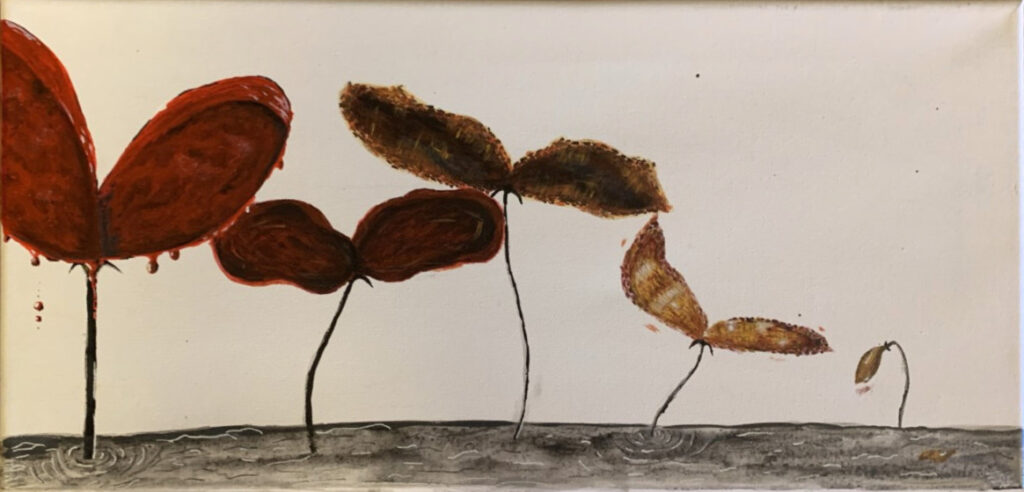
This piece is an exploration of the concept of how the heart can be compared to other biological structures. A Valentine’s heart may have originated from scientific miscommunication and images of flowers, ivy leaves, two hearts together, and early symbols of sex. I also aimed to convey the similarity between the process of a flower wilting and how it compares to the process of hemostasis and blood clotting. This piece asks the generalized question, “Why does the intimacy of the shared image of the heart endear us to one another when often other anatomical structures disgust us?” Also, the piece explores decaying processes and how they relate to the idea of heartbreak.
Strung
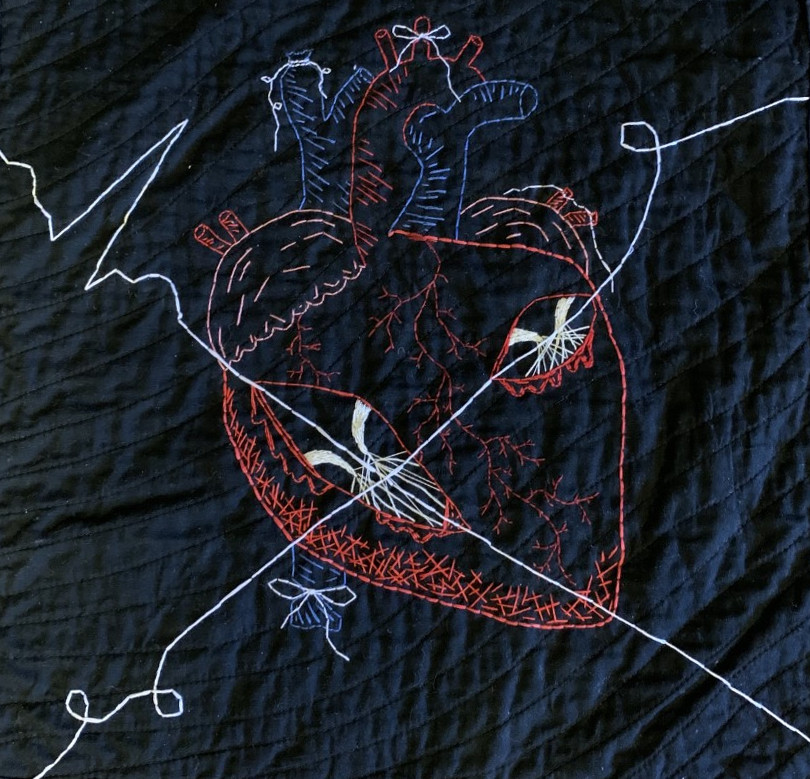
This piece illustrates the symbolism used to describe the chordae tendineae, often referred to as the heartstrings. The ‘pull’ one may experience on their heartstrings is shown by the heartstrings both serving their purpose in the painting and causing damage to the heart in question. The cords holding the heart together are also what is destroying it. This piece’s general purpose is to use the chordae tendineae as a symbol for relationships, and how they can both harm and help depending on how they are used.
Confusion
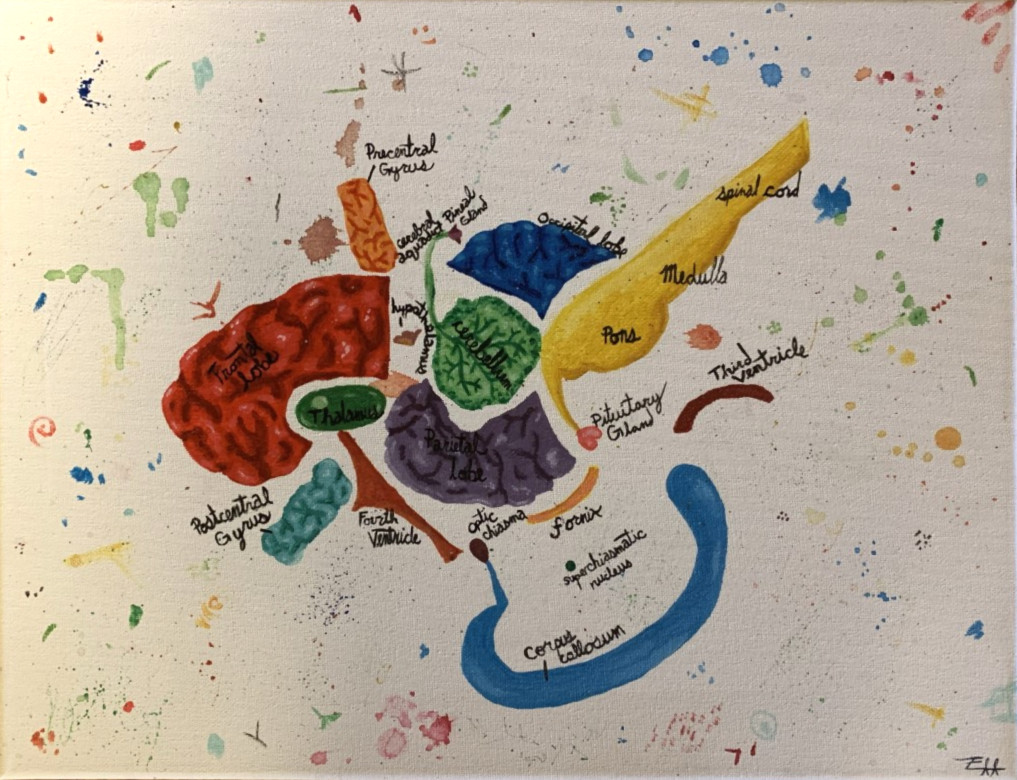
This detonated diagram of a midsagittal section of the brain directly represents confusion while also creating confusion in the viewer through its chaotic rearrangement. The sizes of the different parts lack internal consistency, creating a puzzle that refuses to fit together. This piece’s purpose is to show the logic behind the arrangement of structures in the brain and emphasize the human tendency to try to make sense of disordered images.
Path
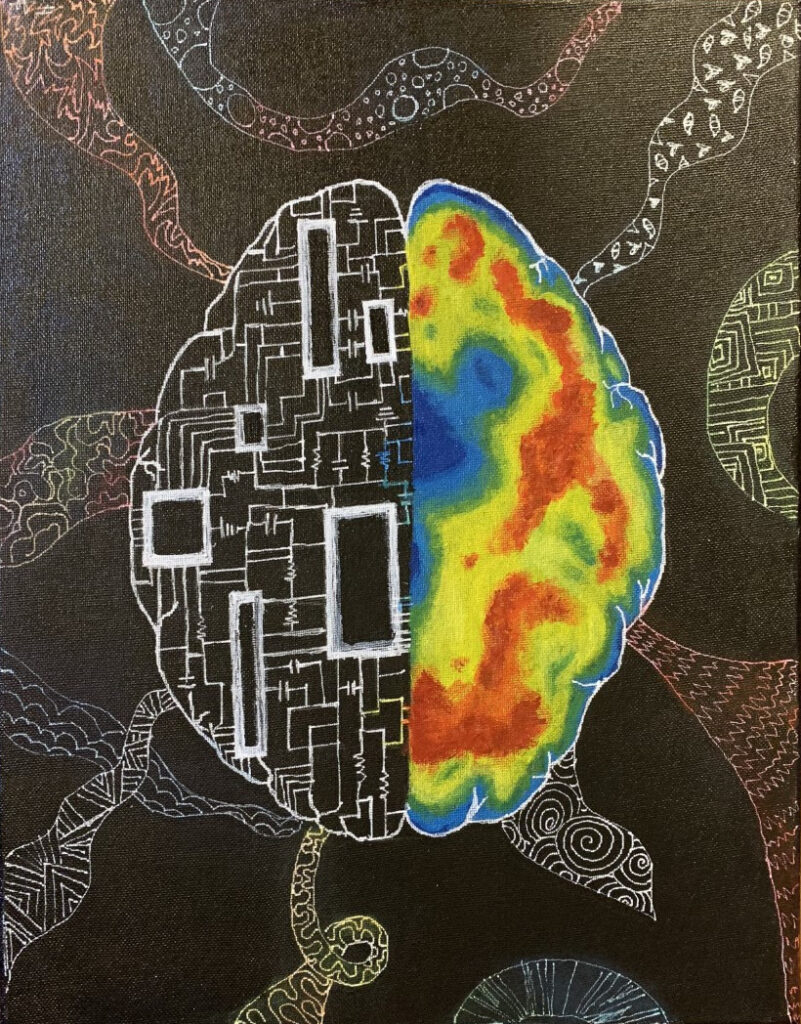
This piece showcases the message-carrying mechanisms of the brain and how they are similar to manufactured computational tools. The paths that messages make and take are significant the comprehension they produce. The image depicts one half of the brain as an MRI and the other as a circuit board connecting in the middle and bridging the gap between neurons and wires. The background of the painting includes ‘paths’ of thought that differ in color and structure. This piece invites the viewer to ask,“ What paths of thought can I find my own mind?” and “How do organized structure and free expression come together to form thoughts?”
Deviant
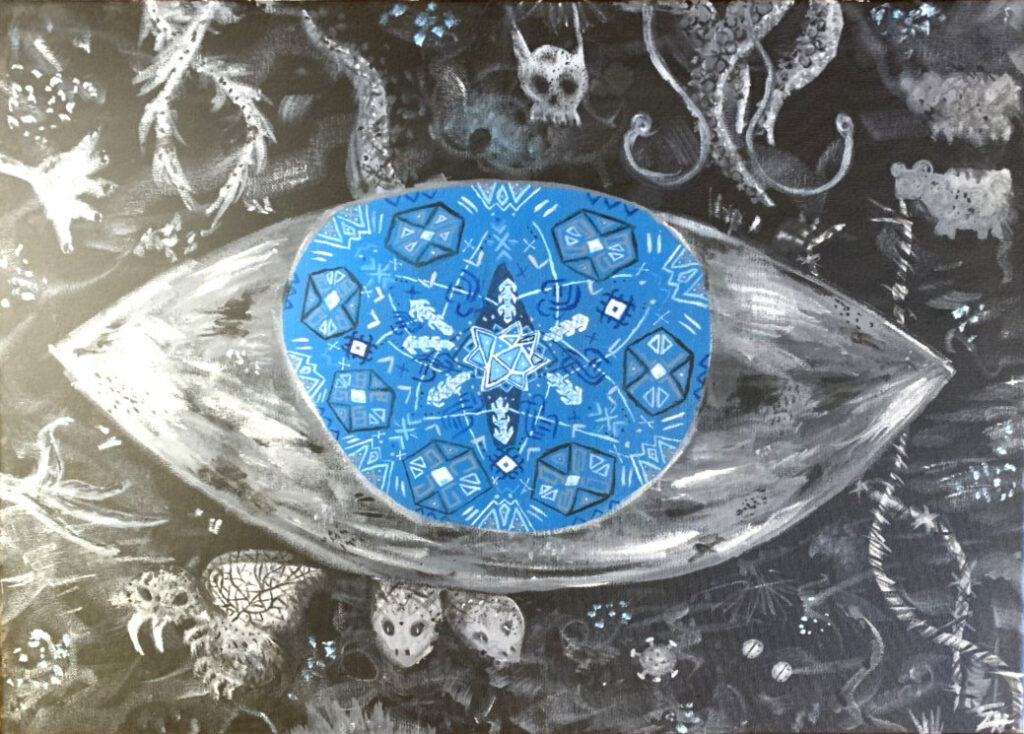
This piece represents the symbolism of the evil eye and how this concept, which was rooted in a cultural fear of people with blue eyes, as related to other aspects of biology that are poorly understood and therefore frightening. The background has various shadowed and obscured living beings that fit the description of a ‘mutant’ living being. The eye is the evil eye, made from patterns found in early Greek, Mesopotamian, Roman, and Egyptian textiles. These textiles are familiar to those that fear the evil eye and are placed there to symbolize that we all have some mutated DNA, and so we are all mutant and all contain some otherness. This piece should inspire you to ask, “Should the unknown be feared, or can we find beauty in it?”
Reflect
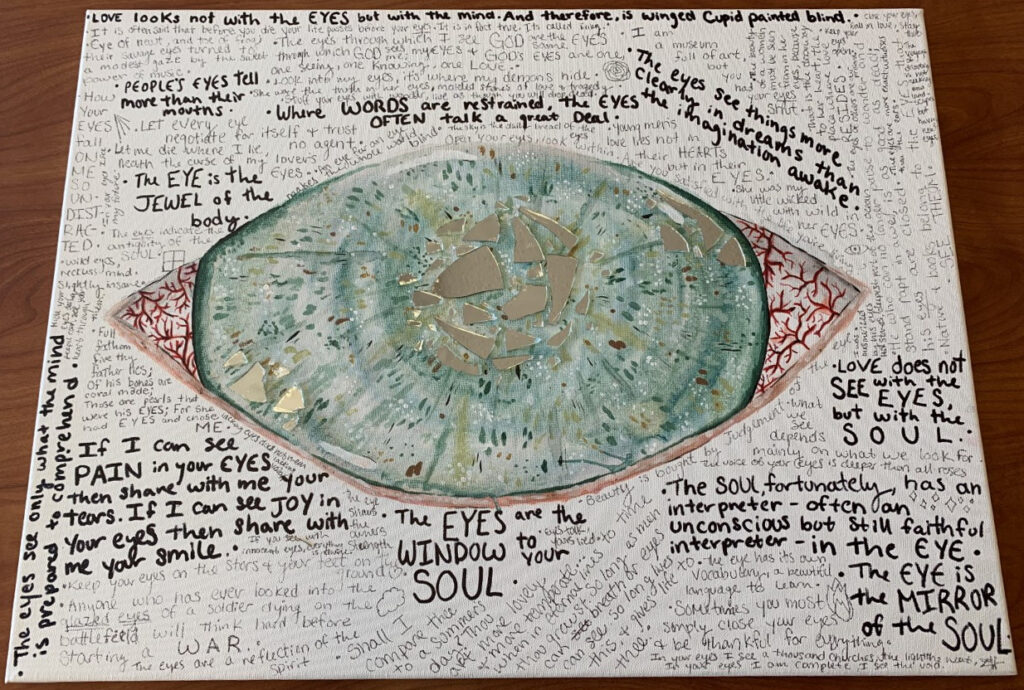
A culmination of exploration into how the eyes are described in classic and modern literature led me to one conclusive word: reflection. This piece includes some of the defining quotes that led me to the conclusion of the word reflection giving further context to the human perception of the eye. Mirror pieces have been placed within the iris to emphasize the concept of the physical description of reflectivity and the internal reflection to be had when considering the quotes in the background. This piece is meant to evoke the question in its viewer, “Why is the eye reflective from both an anatomical standpoint and from a philosophical perspective, and how are these conclusions related?”
